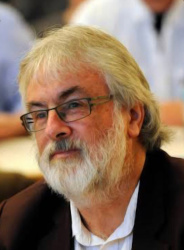Funding Earthquakes and other Projects
Keith RankinIn popular sentiment, economies and economics are all about money. This is not so. Economies are about the flows of goods and services, and the allocation of the resources that are required to produce the goods and services that people want.
There is a branch of economics called monetary economics which is somewhat esoteric, and which is commonly touched on in the penultimate week of a stage one Economic Principles course. Money is important in economics in the same way that lubricating oil is important in a motor vehicle; necessary, but not central to our understanding of motorised transport.
Most importantly, monetary economics is not a zero-sum game. It is possible for there to be more money in place B without there being less money in place A.
The New Zealand economy and much of the rest of the world are in a contractionary phase of the economic cycle, and have been since 2008.
Essentially economies have two phases: expansionary and contractionary. Most of the world's economies were expanding from 2002 to 2007, meaning that economic growth rates were high enough to bring about reductions in unemployment. Excessive expansion, such as New Zealand had around 2004, may require offsetting contractionary policies from the Government and the Reserve Bank. Such policies aim to reduce total spending.
In a contractionary phase, on the other hand, unemployment is either rising, or it is high and not yet falling. Expansionary policies, to raise aggregate spending, are appropriate.
How policymakers manage construction and reconstruction projects depends critically on which phase the economy is in. In an expansion, the reconstruction of Christchurch might have required less spending in Auckland so that resources could be redeployed to Christchurch.
In a contraction, however, there are likely to be plenty of potential construction workers and other resources already in Christchurch. Creating more unemployment in Auckland by cancelling or postponing Auckland projects, or by further reducing the spending of Auckland's poor, is not a solution to Christchurch's problems.
Economic crises commonly stem from financial crises. In a pre-crisis expansion economy, the rich spend relatively freely, as rising asset prices give them the impression of a large buffer of savings. The poor also spend relatively freely, as their incomes and their access to credit are both rising.
After a financial crisis, this all changes. The rich can keep spending, but choose to cut back. The poor, facing unemployment, reduced wage growth and less access to credit, must cut back on their spending. The economy moves into an impasse that can be characterised as: those who can spend more will not, and those who will spend more can not.
This situation represents a stalemate that can lead to a protracted contractionary phase that only increased government-initiated spending (eg on construction or reconstruction) or exports can get an economy out of. New Zealand exported its way out of trouble from 1998 to 2002 through a low exchange rate. In a global crisis such an export-led solution is called "beggar-thy-neighbour" or "currency wars", and appears unlikely as a general solution for New Zealand this time.
The accepted 'Keynesian' solution is that recovery must be ignited by sufficient government-initiated spending to reignite the "animal spirits" of capitalist entrepreneurship. Once that task is achieved, a renewed expansion becomes self-sustaining. The government moves into fiscal surplus, and the increased debt incurred by government is serviced and eventually repaid. If government-initiated spending is insufficient to reignite those animal spirits, then the government joins the poor in a pile of debt, and the economy continues to contract.
Important historical examples are New Zealand and the United States in the late 1930s. New Zealand's state housing programme was initiated in 1936, following on as it did from a currency devaluation in 1933 and increased British consumer spending. That programme reignited those animal spirits. Economic growth in 1937 was well above 10 percent.
In the American New Deal, the stimulus arising from Federal Government-initiated construction spending proved insufficient to pull that economy out of its contractionary phase. Attempts to balance the US Federal Budget in 1937 and 1938 only brought the Great Depression back. It was only the military requirements of World War 2 that obliged sufficient Federal Government spending. War spending reignited animal spirits in the United States after 1940. Further, it was the reconstruction of Europe and Japan after WW2 – effectively gifts from the United States – that perpetuated the American expansion, creating in the process new markets for American goods.
In 2011, Christchurch needs newly constructed resources. Most of all, it needs people (including Aucklanders) and government to buy goods and services from Christchurch-based businesses. Christchurch will be made stronger neither by reducing the spending of Aucklanders, nor by reducing government spending on Auckland projects. It's not about spending less money in Auckland so that more money can be spent in Christchurch. It's about using new spending opportunities in both Christchurch and Auckland to reignite the whole country's economy.
Keith Rankin teaches economics at Auckland's Unitec Institute of Technology. Click here to comment on this article on Auckland.Scoop.co.nz



 Gordon Campbell: On The Coalition’s Awful, Not Good, Very Bad Poll Results
Gordon Campbell: On The Coalition’s Awful, Not Good, Very Bad Poll Results Ian Powell: Policy Vacuum Enables For-profit Corporate General Practice Ownership By Stealth
Ian Powell: Policy Vacuum Enables For-profit Corporate General Practice Ownership By Stealth Gordon Campbell: On Iran Killing Its Rappers, And Searching For The Invisible Dr. Reti
Gordon Campbell: On Iran Killing Its Rappers, And Searching For The Invisible Dr. Reti Peter Dunne: MPs Unusually Quiet On Pay Rise
Peter Dunne: MPs Unusually Quiet On Pay Rise Ian Powell: Cuba And New Zealand: A Relationship Worthy Of Strengthening
Ian Powell: Cuba And New Zealand: A Relationship Worthy Of Strengthening Gordon Campbell: On bird flu, AUKUS entry fees and Cindy Lee
Gordon Campbell: On bird flu, AUKUS entry fees and Cindy Lee